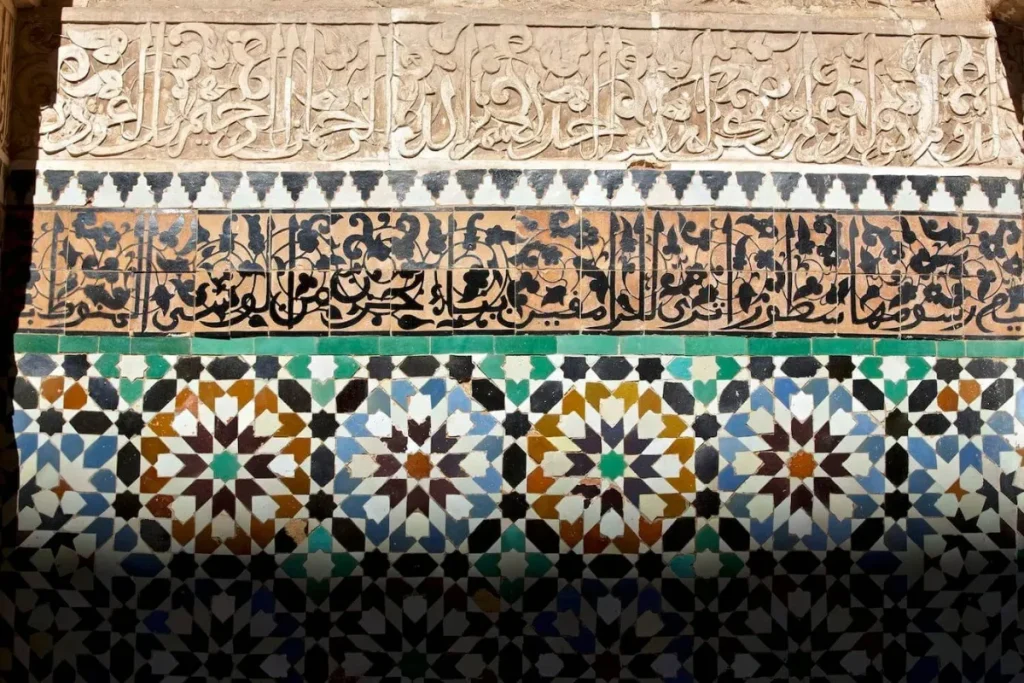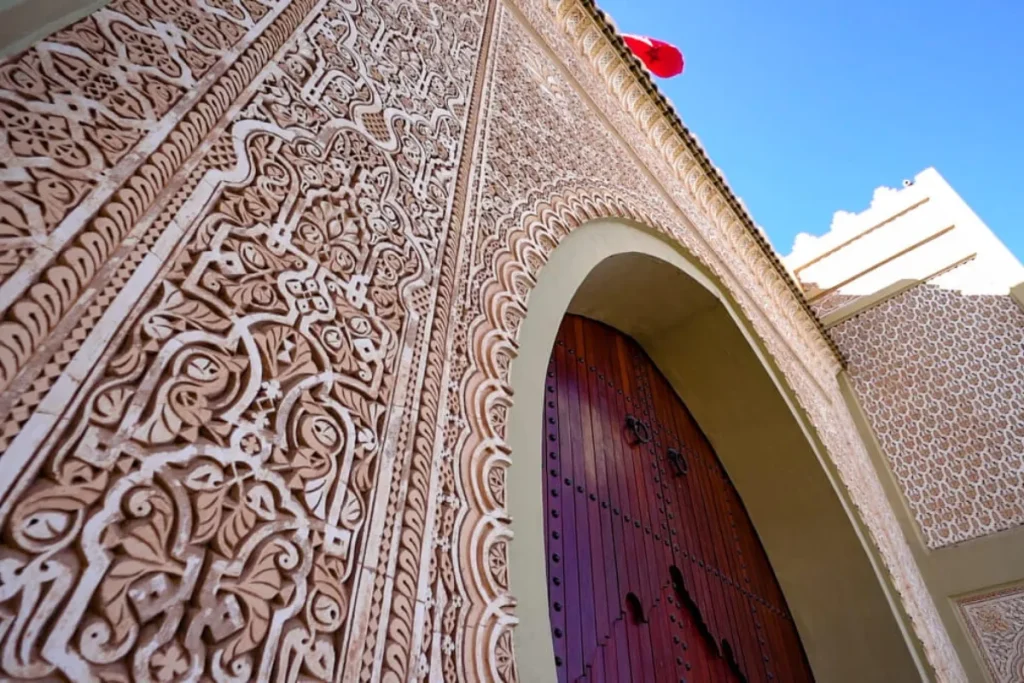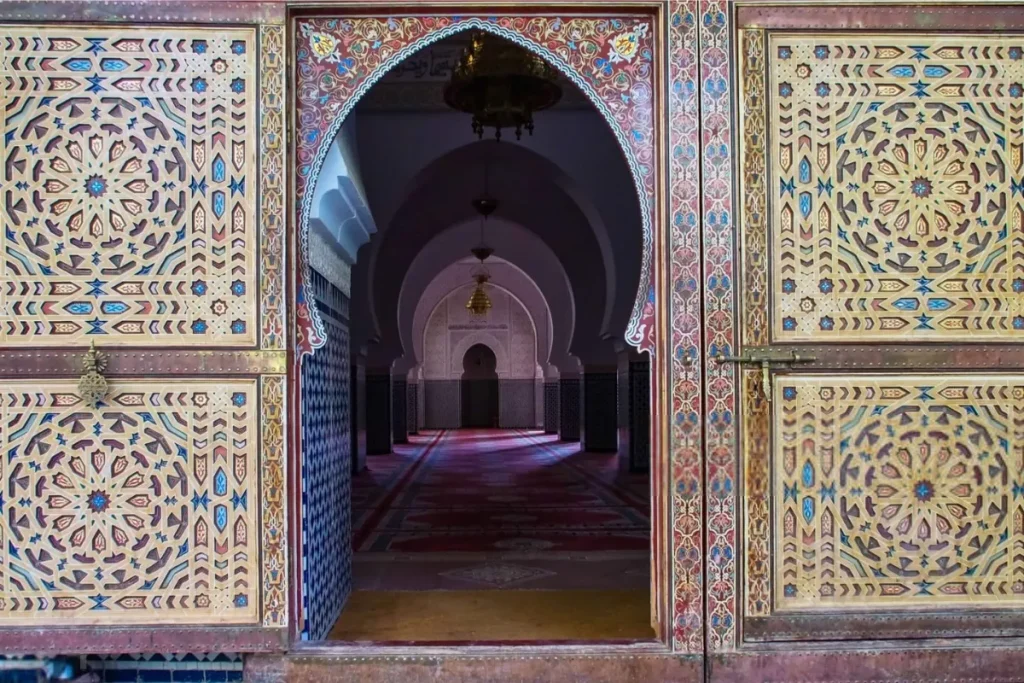
Historical Significance
Moulay Ali Cherif, the founder of the Alaouite dynasty, holds a pivotal place in Moroccan history:
- He established the Alaouite dynasty in the 17th century, which continues to rule Morocco today.
- The mausoleum marks the birthplace of the dynasty in the Tafilalet region.
- It serves as a symbol of the religious and political legitimacy of the Moroccan monarchy.
The site’s importance extends beyond its historical context, serving as a center of spiritual pilgrimage and a showcase of traditional Moroccan architecture.

Architectural Marvels
The mausoleum complex is a masterpiece of Islamic architecture, featuring:
- Impressive Entrance: A grand gateway adorned with intricate geometric patterns and calligraphy.
- Central Courtyard: A tranquil open space surrounded by arched walkways.
- Prayer Hall: Beautifully decorated with elaborate stucco work and tile mosaics.
- Tomb Chamber: The final resting place of Moulay Ali Cherif, marked by an ornate cenotaph.
- Minaret: A slender tower that calls the faithful to prayer.
Each element of the mausoleum’s design reflects the refined artistic traditions of Morocco, from the delicate zellige tilework to the carved cedar wood ceilings.
Visitor Experience
As you approach the mausoleum, you’ll be struck by its serene atmosphere and the reverence with which local visitors treat the site. Here’s what you can expect during your visit:
- A peaceful environment conducive to reflection and appreciation of history
- The opportunity to observe traditional Islamic architecture up close
- Chances to witness local religious practices and pilgrimage traditions
Please note that as an active religious site, certain areas may have restricted access, particularly for non-Muslim visitors.

Visitor's Guide
To make the most of your visit to the Mausoleum of Moulay Ali Cherif:
Remember, your respectful visit helps preserve these historical treasures for future generations.
- Dress respectfully: The mausoleum is a sacred site; wear clothing that covers shoulders and knees, and women should bring a scarf for hair covering.
- Respect sacred spaces: Remove your shoes before entering carpeted areas as a sign of respect for the holy site.
- Maintain reverence: Keep your voice low and be mindful of worshippers; this is an active place of prayer and reflection.
- Ask before photographing: Photography rules vary within the mausoleum; always seek permission before taking pictures.
- Time your visit wisely: Early morning or late afternoon visits offer a quieter experience and help avoid the midday heat.

The Mausoleum of Moulay Ali Cherif is more than just a historical monument; it’s a living link to Morocco’s royal heritage and spiritual traditions. As you walk through its hallowed halls and tranquil courtyards, you’re not just observing history – you’re stepping into the very place where the story of modern Morocco began. Whether you’re a history enthusiast, an architecture lover, or a spiritual seeker, this remarkable site offers a profound connection to the heart of Moroccan culture and identity.


